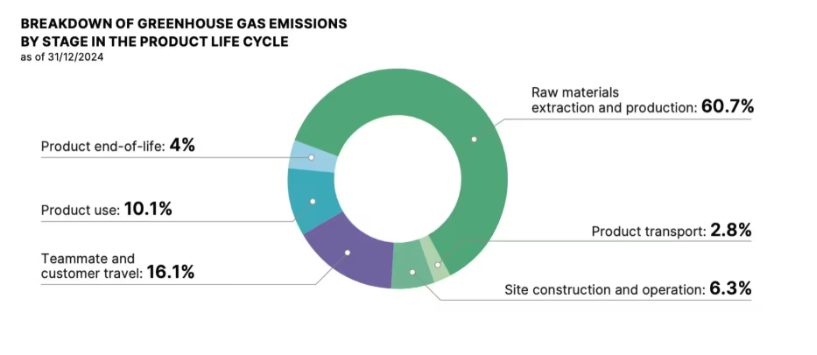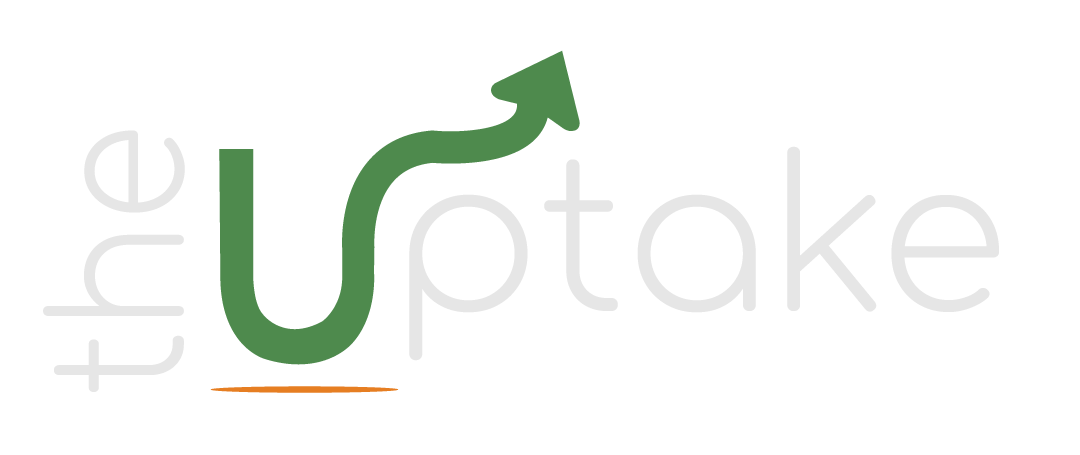Most big retailers publish sustainability reports that are basically good marketing – they talk about recycled bags while their business still depends on selling more and more new products. But when you look closely at Decathlon’s actual data, something different is happening. They’re making real changes to how their business works, not just how it looks.
Here are four things that stood out to me from their reports.One I found particularly exciting and positive.
1. They’re Measuring What Actually Matters
Most companies set goals around “carbon intensity” – basically, emissions per euro of sales. It sounds good, but there’s a problem with this. Imagine you get a more fuel-efficient car, but then you drive twice as much. Yes, your car is better, but you’re still polluting more overall.
Decathlon decided to do something harder. They committed to cutting their total CO2 emissions by 42% by 2030 (compared to 2021), with a 20% reduction target by 2026. This is absolute reduction – meaning they can’t just grow their way out of it. They actually have to emit less, full stop.
As they put it themselves: “reducing our carbon intensity does not necessarily mean that we are emitting less greenhouse gas.” Fair point, and honest.
2. It’s Not About Transport – It’s About Making Stuff
When you think about a global retailer’s environmental impact, you probably picture cargo ships and delivery trucks, right? The numbers tell a completely different story.

60.7% of Decathlon’s carbon footprint comes from raw materials and manufacturing. Meanwhile, all the transport – ships, trucks, everything – is only 2.8% of their emissions.
This explains why they’re so focused on redesigning products from the start (they call it “ecodesign”). The data shows it’s working:
- In 2024, 48.5% of their sales came from products designed with sustainability in mind, up from 38.8% in 2023
- They’re aiming for 100% by 2026
And these aren’t vague claims. For example, their ITIWIT kayak uses a special dyeing process that cuts emissions by 15-20%, and 94% of potential damage can be repaired. Some KALENJI running shoes use 3D knitting to reduce waste. These are real, specific changes.
3. Renting, Repairing, and Reselling Is Actually Making Money
This is the bit that gets me most excited. There’s a common assumption that sustainability costs money and hurts profits. Decathlon is showing the opposite can be true.
They’ve built a massive operation around rentals, repairs, and second-hand sales – 1,730 in-store workshops and 3,841 technicians globally. And it’s growing fast:
- Circular sales (rentals, repairs, second-hand) grew 10.4% in 2024
- Rental sales jumped 75% compared to the previous year
- A rental test in Belgium showed it was 5-10 times more profitable than traditional sales after 4-5 years
The product rental trial in Belgium seems to be overwhelmingly positive:
- Price: Based on a subscription rent model from 25 to 95€ per months
- CO2 Impact: An average of 35 articles rented per year per person, impact is 191kg. in 2026, could go down to 83kg by 2033. The equivelant today would be 2100kg
- Profitability: It is 5-10 times more profitable than traditional sales after 4-5 years
Think about what this means. When you rent products instead of buying them, companies have a real incentive to make things that last. If a jacket falls apart after six months, that’s a loss for them, not just for you. This changes everything – from how products are designed to what materials are used.
And from a business perspective, it makes sense too. You’re less exposed to volatile raw material prices, and you’re building loyalty with customers who keep coming back.
4. They’re Actually Doing It: More Sales, Less Emissions
The big question everyone asks is: can a company actually grow while reducing emissions? Not just emissions per sale, but total emissions?
Decathlon’s 2024 numbers answer this pretty clearly:
- Sales went up from €15.6 billion to €16.2 billion
- Absolute CO2 emissions went down by 2.8% (from 8,337,508 to 8,103,302 tonnes)
- Since 2021, they’ve cut absolute emissions by 13.2%
This is proof that it can be done. Not in theory – in practice.
What This Actually Means
Look, I’m not saying Decathlon is perfect. These are ambitious targets and there’s a long way to go. They need to be monitored closely, and there will inevitably be challenges along the way.
But here’s what I appreciate: the transparency is real. The tone matches their values and feels genuine, not like corporate greenwashing. Could the information be simplified? Yes, definitely – there’s a lot to wade through. But at least the data is there.
What really excites me is the rental model approach. It’s not just about one company doing better – it’s about changing how consumers think about ownership, pushing the entire industry to make more durable products, and showing that you can reduce material use while still being profitable. That combination is powerful.
Decathlon isn’t just publishing a nice sustainability report. They’re testing a different way of doing business – one that might actually work for the long term. And honestly, that’s worth paying attention to.
The real question now is whether other retailers will take note. Because if one company can do this, there’s no excuse for the rest not to try.
